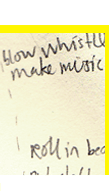 |
 |
How could people become their own renewable source of energy?
|
 |
 |
| |
|
 |
| |
| >Projects |
|
| |
Human Power Plant
|
| The daily energy supply from your body heat. |
| |
| Matthias Faingnaert |
| |
| |
The body in its normal activity does flexing, compressing and stretching, it produces urine and body heat.
I was interested in using these consistent energy sources as opposed to other human-powered schemes that take extra exertion, like spring or dynamo flashlights.
So I focused on body heat as main energy source.
|
| |
How can we transform it? |
Thermoelectric materials can convert the body heat into electricity by using combinations of materials (metals or new ceramics) that are poor thermal conductors and good electrical conductors. When different temperatures come into contact, electrons migrate, charging a battery or creating usable current through something called the Seebeck Effect.
A sleeping person produces in average 81 watts, a walking person 163 and a long distance runner 1,048, but of course there is no 100% capture. Body heat, for example, can only be converted with 3% efficiency with current thermoelectric materials. |
| |
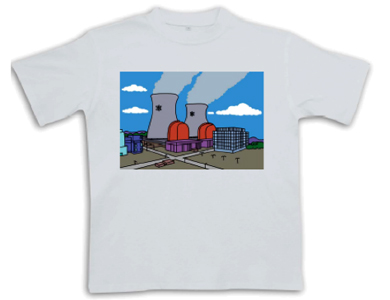 |
| |
| Question: |
How could we integrate the transformation of body heat to electricity into our daily activities? |
| |
|
| A scenario with Mark |
| |
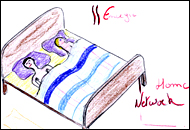 |
|
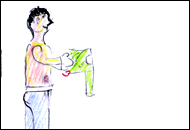 |
| Mark's blanket collects his and his wive's body heat over night and feeds it into the home power network. |
|
In the morning he puts on his special shirt that can transform his heat and stores the energy in a battery. |
| |
|
|
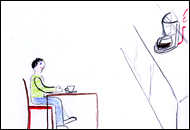 |
|
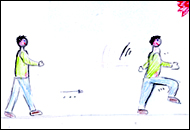 |
| Some of his home appliances can use the energy that was saved during the night by the blanket. |
|
On his way to work, Mark decides to run a little to generate more heat and therefore more energy. |
| |
|
|
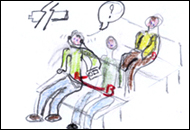 |
|
 |
| On the tram he would like to listen to his mp3 player, but Mark has not enough energy stored yet. However, his neighbour shares his power and they connect. |
|
Instead of taking the lift, Mark walks up the stairs for charging his battery. |
| |
|
|
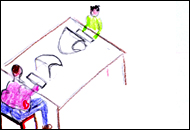 |
|
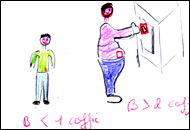 |
| At work there is Mark's colleague Bruno. Bruno's body volume is much larger than Mark's, which means that he is a good energy generator. |
|
Since Bruno has more energy saved, he invites Mark at for a coffee. They can pay with their stored energy at the machine. |
| |
|
|
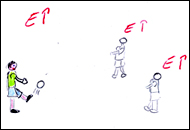 |
|
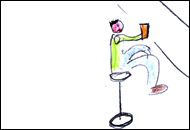 |
| In the evening, Mark goes playing soccer. During the match, he and his team charge their batteries up a lot. |
|
After the match, they get their drinks cheaper as they donate some electricity to the bartender. |
| |
|
|
|
| |
| |
| Conclusions |
With advances in nanotechnology and the development in material sciences, the conversion of body heat into electricity will be more efficient and products will consume less energy.
This means that in the future realistic applications and advantages of my scheme could be valuably considered.
|
| |
| |
| |
| |
|
 |
|
|
 |


